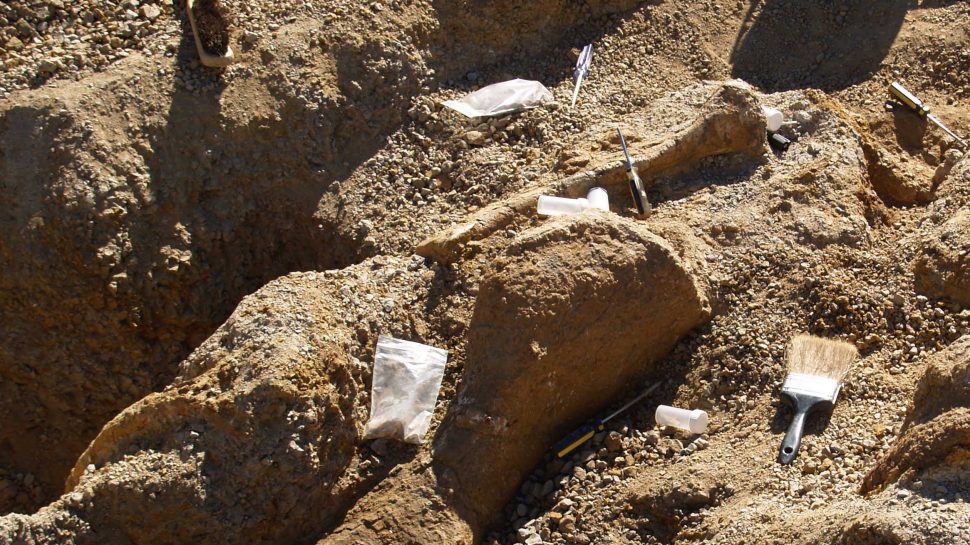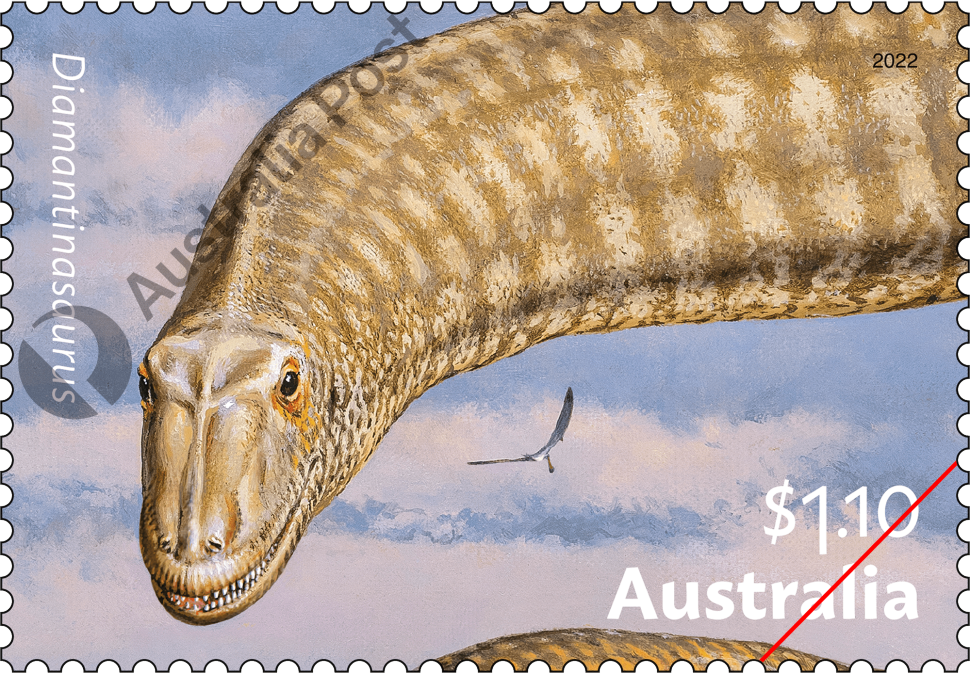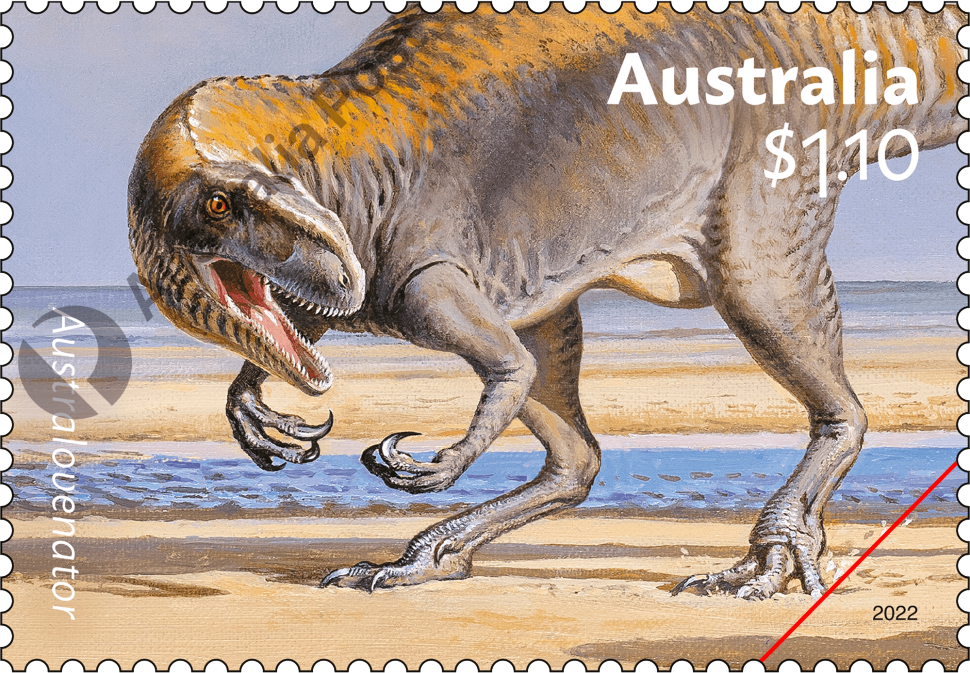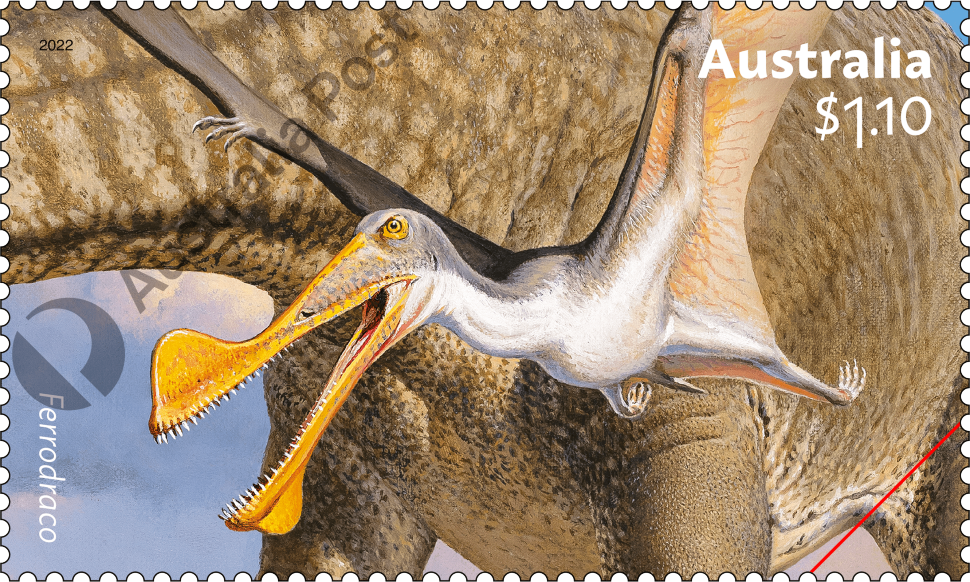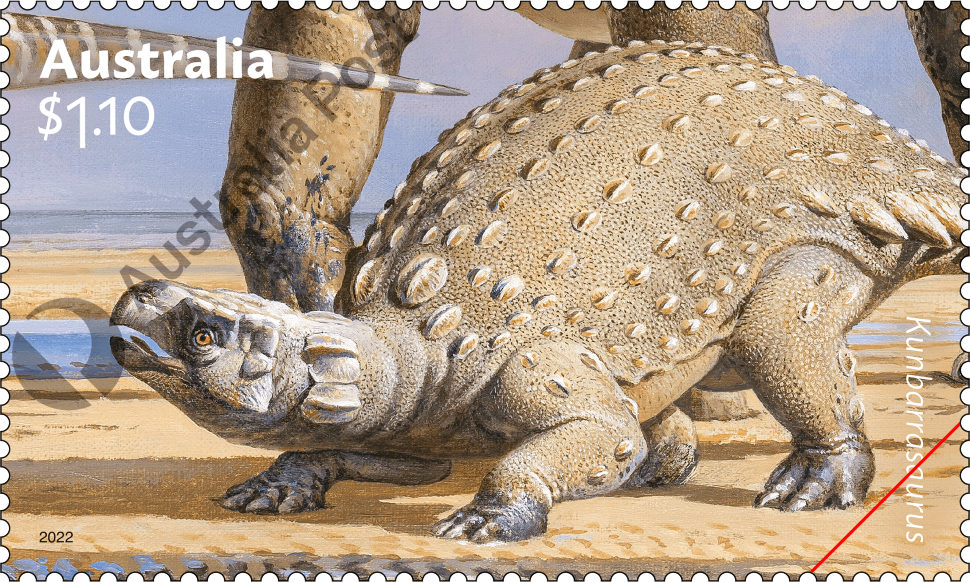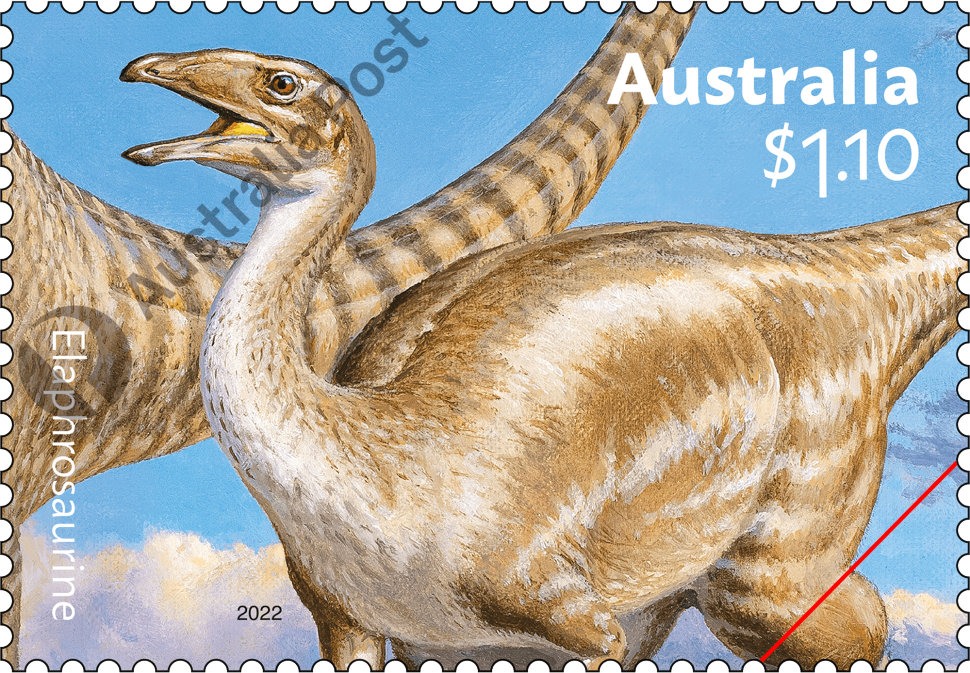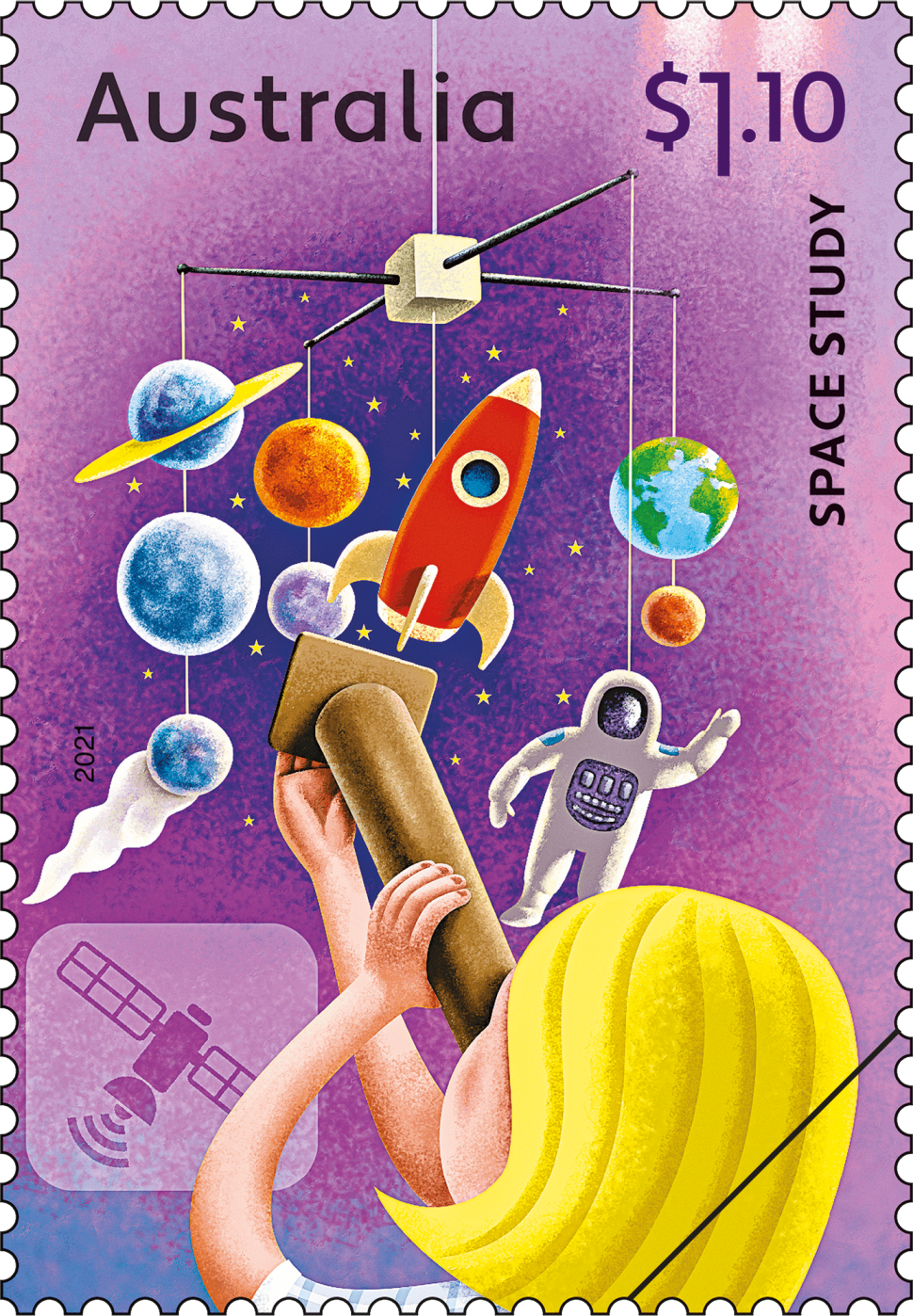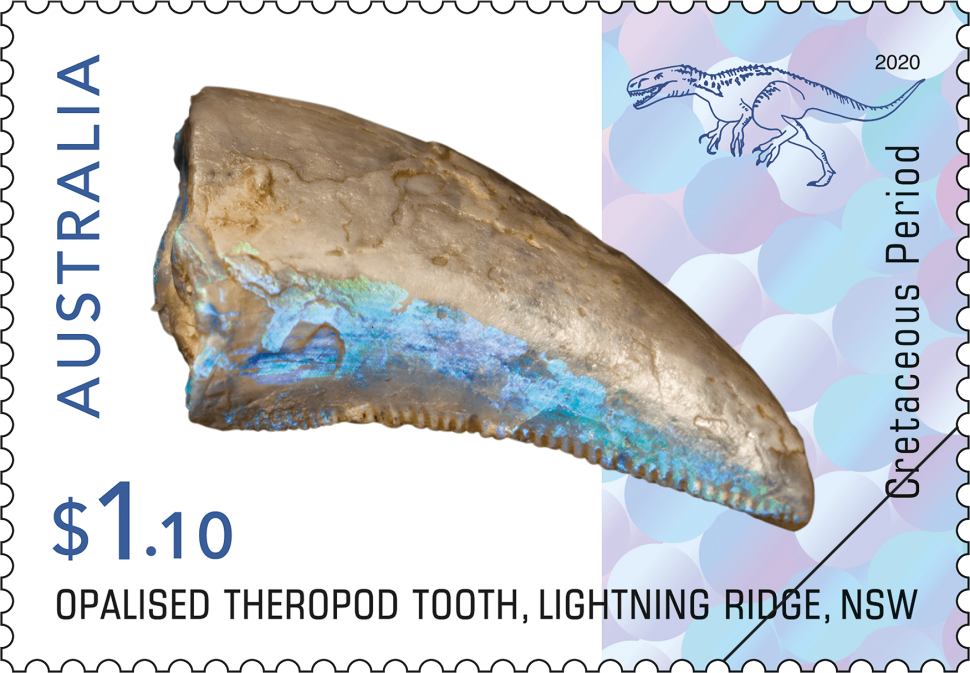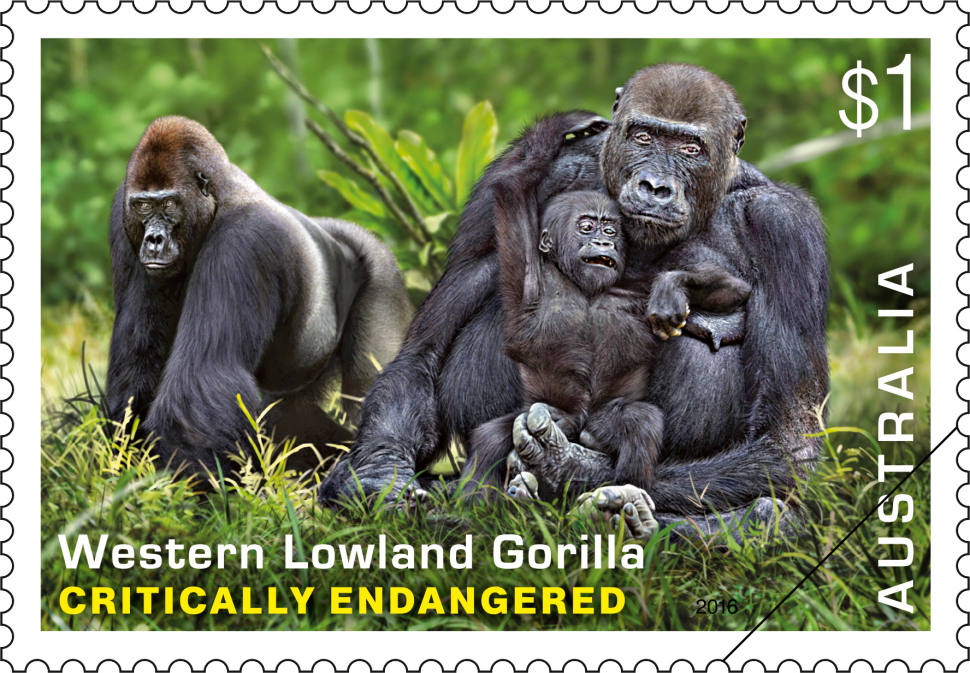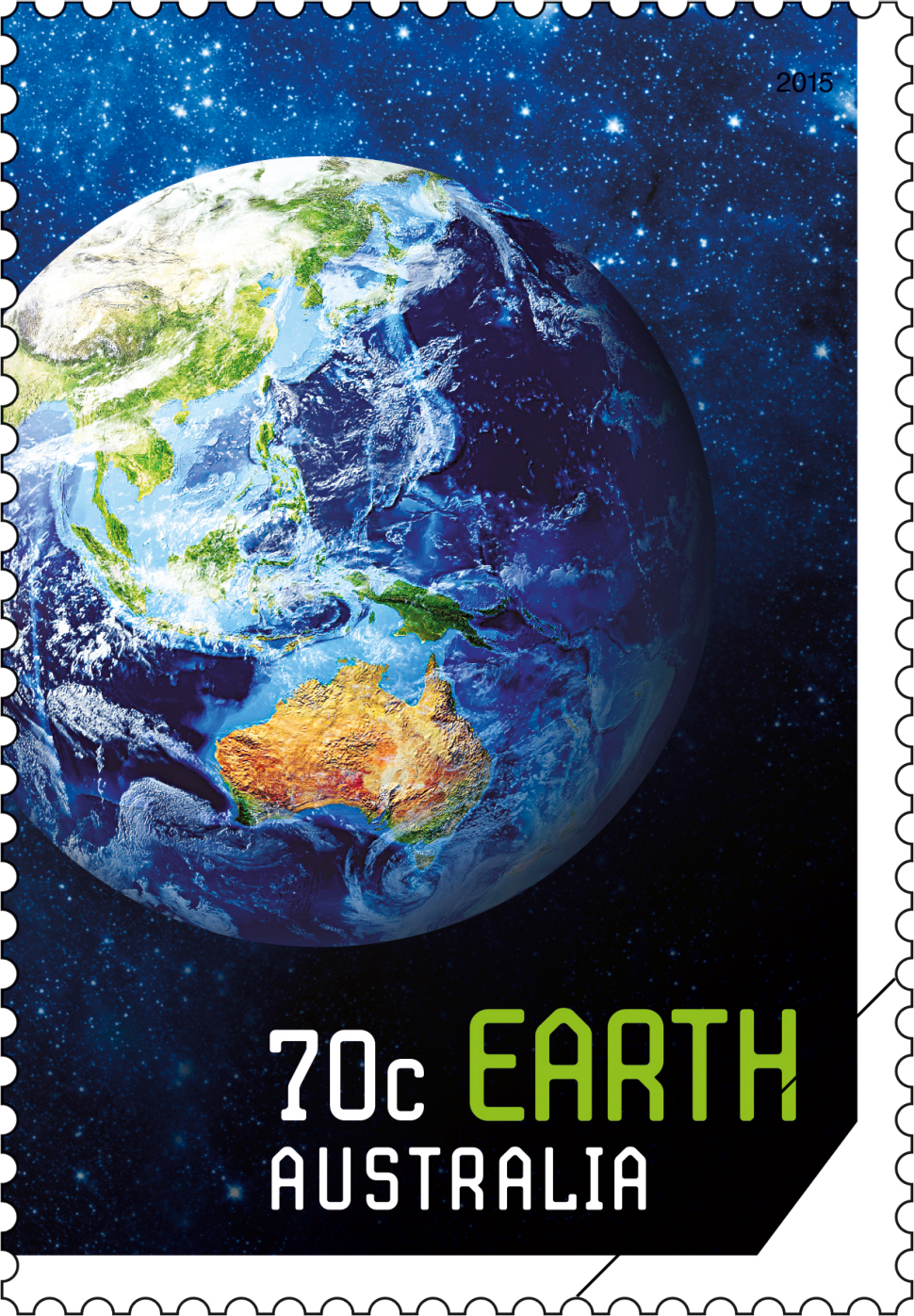Overview
This year’s Australia Post Collecting Month stamp issue takes us back to animals of the Mesozoic, with four dinosaurs and a pterosaur (winged lizard) from the Cretaceous Period (145–66 million years ago).
During the Cretaceous Period, present-day Australia was joined to Antarctica, New Zealand and South America, and close to Africa, forming the supercontinent Gondwana. Around 80 million years ago, New Zealand drifted away from the rest of Gondwana. The Australian part of Gondwana was located close to the South Pole and had a cool, wet climate. A shallow inland sea, the Eromanga Sea, covered nearly a third of what is now Central Australia. These vast floodplains between Antarctica and southern Australia provided an ideal habitat for dinosaurs and pterosaurs. Forests made of araucarians and podocarps covered much of the land, with small and large ferns, gingkoes, cycads, clubmosses and horsetails making up an understorey, with just the beginnings of the flowering plants.
The stamp illustrations are by artist Peter Trusler, who specialises in depicting prehistoric fauna in consultation with scientists and palaeontologists.
Technical specifications
- Issue date
- 5 September 2022
- Issue withdrawal date
- 31 March 2023
- Denomination
- $1.10 x 5
- Stamp illustration
- Peter Trusler
- Product design
- Jason Watts, Australia Post Design Studio
- Paper: gummed
- Tullis Russell 104gsm Red Phos.
- Paper: self-adhesive
- Tullis Russell Red Phos. PSA
- Printer
- EGO
- Printing process
- Offset lithography
- Stamp size (mm)
- 37.5 x 26 & 50 x 30
- Minisheet size (mm)
- 170 x 80
- Perforations: 37.5 x 26mm
- 13.86 x 14.6
- Perforations: 50 x 30mm
- 14.4 x 14
- Sheet layout
- Module of 50 & module of 25
- FDI Postmark
- Winton QLD 4735
- FDI withdrawal date
- 3 October 2022
$1.10 Diamantinasaurus
The titanosaurian sauropod (meaning lizard-footed) Diamantinasaurus matildae lived during the Mid-Cretaceous Period, around 100 million to 95 million years ago, in what is now southern central Queensland. This huge four-legged, long-necked, plant-eating dinosaur is estimated to have measured 16 to 20 metres in length and about two-and-a-half to three metres tall at the hip. The first fossilised bones were found in 2005 near Winton, Queensland. Around 30 per cent of the skeleton has been recovered, making it the most complete Cretaceous sauropod ever found in Australia. The known skeleton (nicknamed “Matilda”) includes most of the forelimb, shoulder girdle, pelvis, hindlimb and ribs, one shoulder bone, a radius and some vertebrae.
$1.10 Australovenator
This theropod (three-toed) dinosaur lived during the Mid-Cretaceous Period and was discovered near Winton, Queensland. Nicknamed “Banjo”, its skeleton was found intermingled with the bones of Diamantinasaurus matildae. Around 40 per cent of its skeleton has been excavated to date, making it the most complete carnivorous dinosaur known from Australia. Like all carnivorous dinosaurs, Australovenator was two-legged with smaller forelimbs. It was also equipped with three scimitar-shaped claws and sharp teeth. A swift predator, Australovenator was about one-and-a-half metres high at the hip and five to six metres in length. A claw of this dinosaur has also been found in Early Cretaceous rocks in Victoria and in Lightning Ridge, New South Wales.
$1.10 Ferrodraco
Fossils from this pterosaur were found in the Winton region of central western Queensland in April 2017. This flying reptile had a wingspan of about four metres and lived around 96 million years ago, in the Late Cretaceous Period. Until this discovery, only two species of Australian pterosaurs had been described, both based on fossil skull fragments. This new species, a fully grown adult, includes a partial skull, five partial neck vertebrae and bones from both the left and right wings. It is likely that it ate mainly fish and lived around lake and river systems.
$1.10 Kunbarrasaurus
The near-complete, fossilised skeleton of this dinosaur was discovered in 1989 near Richmond in north-western Queensland. This small, squat, armoured ankylosaur (“fused lizard”) is the most complete skeleton ever discovered from Eastern Gondwana (Australia, Antarctica, Madagascar and India) and the most complete ankylosaurian skeleton from the entirety of the Gondwanan continents. It lived around the Eromanga Sea 103 million to 101 million years ago, in the Early Cretaceous Period. It was a plant eater, and remains of this individual’s last meal were found in its stomach region. Kunbarrasaurus was quadrupedal and covered in bony armour on the head, back, abdomen, legs and along its long tail. Around the size of a modern sheep, it had a parrot-like beak and an inner ear similar to that of a turtle.
$1.10 Elaphrosaurine
This is a recently discovered, toothless theropod dinosaur species related to Elaphrosaurus (“light-footed lizard”). It is not yet assigned to any genus because of its incompleteness. This dinosaur has been described from a single neck vertebra bone discovered near Cape Otway, in Victoria, in 2015. The sediments at the site date from the Early Cretaceous around 110 million to 107 million years ago. During this period, the climate of the Cape Otway region was cold, indicating that this animal could tolerate near-polar temperatures, which were warmer than that area today, as there were no ice caps. It ran low to the ground on two legs and had a slender body, long neck, stubby arms and a possibly toothless skull. It probably had a plant-based diet and did not hunt prey. Evidence suggests that elaphrosaurs started life eating a range of foods, including possibly tiny monotremes, insects and fruits, but shed their teeth as they aged, to be replaced by a horny beak. This discovery suggests that elaphrosaurs were more widespread and lived over a longer period than previously thought.
Shop our stamp collectables
Set of stamps:
Set of Australian Dinosaurs Gummed Stamps
This set of stamps contains all five stamps from the Australian Dinosaurs stamp issue.
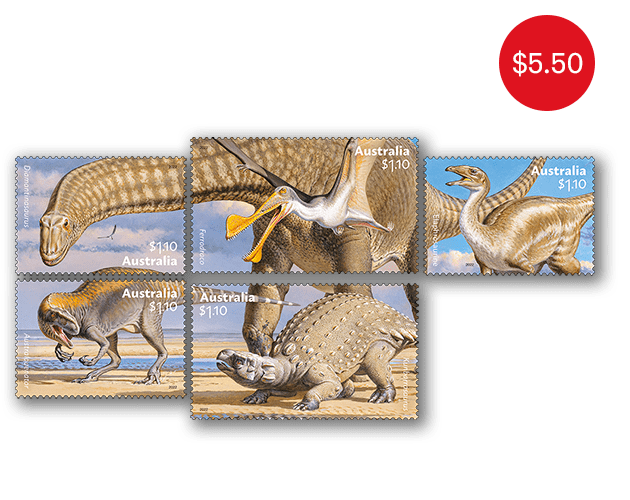
Stamp pack:
Australian Dinosaurs Stamp Pack
The Australian Dinosaurs stamp pack contains all five stamps and minisheet from the stamp issue presented in a high-quality folder.
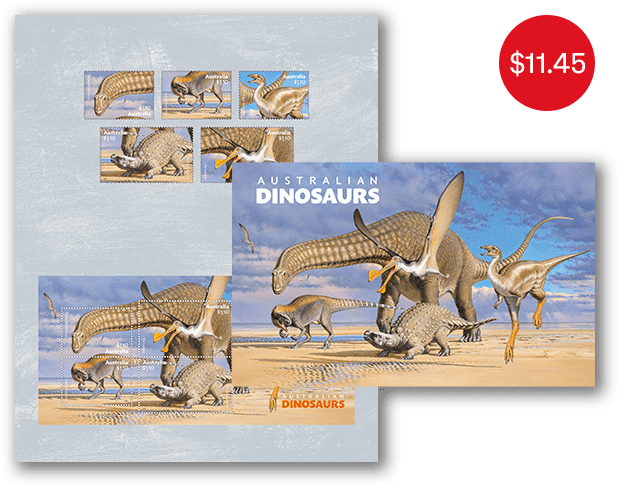
Minisheet:
Australian Dinosaurs Minisheet
The Australian Dinosaurs minisheet consists of the five stamps from the issue incorporated into a miniature stamp sheet.

Four-Coin Set:
Uncirculated Four-Coin Collection
The Australian Dinosaurs 2022 Uncirculated Four-Coin Collection features four Australian dinosaur $1 coins, produced in aluminium-bronze and housed in a folder.

- Set of stamps
- Stamp pack
- Minisheet
- Four-Coin Set
Additional collectables:
- Booklet of 10x $1.10 Diamantinasaurus Stamps
- Booklet of 10x $1.10 Australovenator Stamps
- Booklet of 10x $1.10 Elaphrosaurine Stamps
- Booklet of 10x $1.10 Kunburrasaurus Stamps
- Booklet of 10x $1.10 Ferrodraco Stamps
- Gutter Strip of 10x $1.10 Diamantinasaurus Stamps
- Gutter Strip of 10x $1.10 Australovenator Stamps
- Gutter Strip of 10x $1.10 Elaphrosaurine Stamps
- Gutter Strip of 10x $1.10 Kunburrasaurus Stamps
- Gutter Strip of 10x $1.10 Ferrodraco Stamps
- Pictorial Envelope for the Australian Dinosaurs Stamp Issue
- Australian Dinosaurs – Elaphrosaurine Postal Numismatic Cover
This content was produced at the time of the stamp issue release date and will not be updated.
